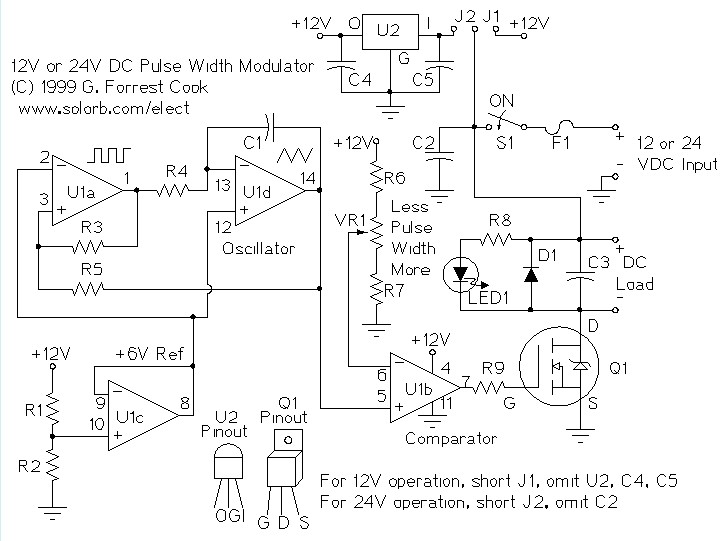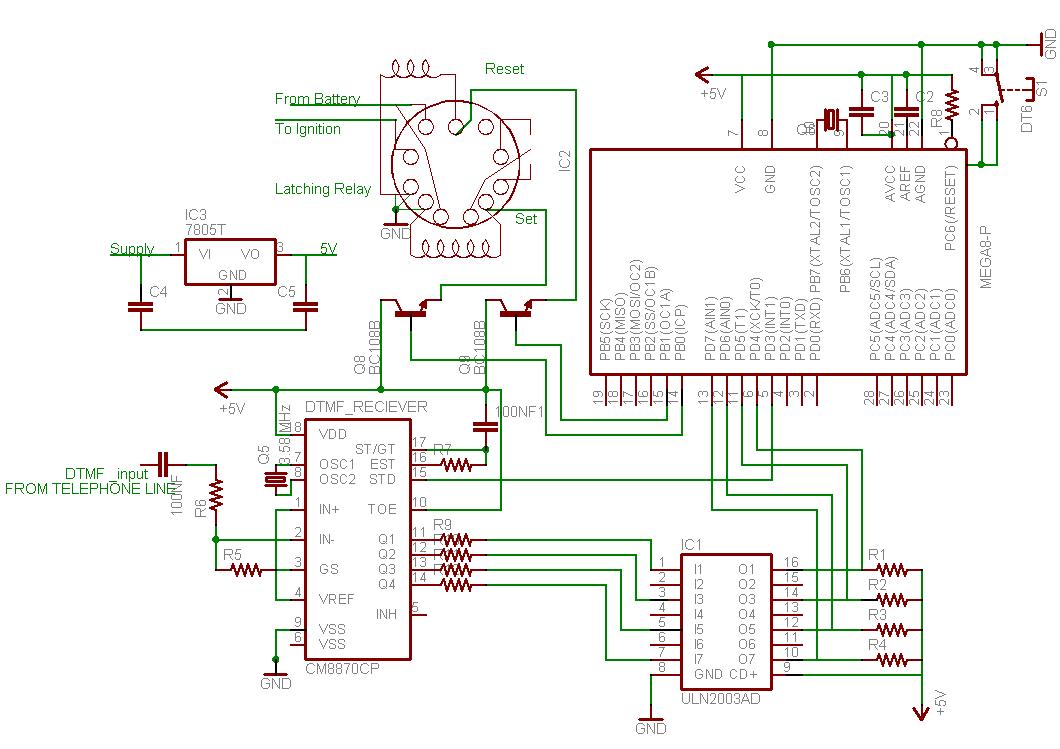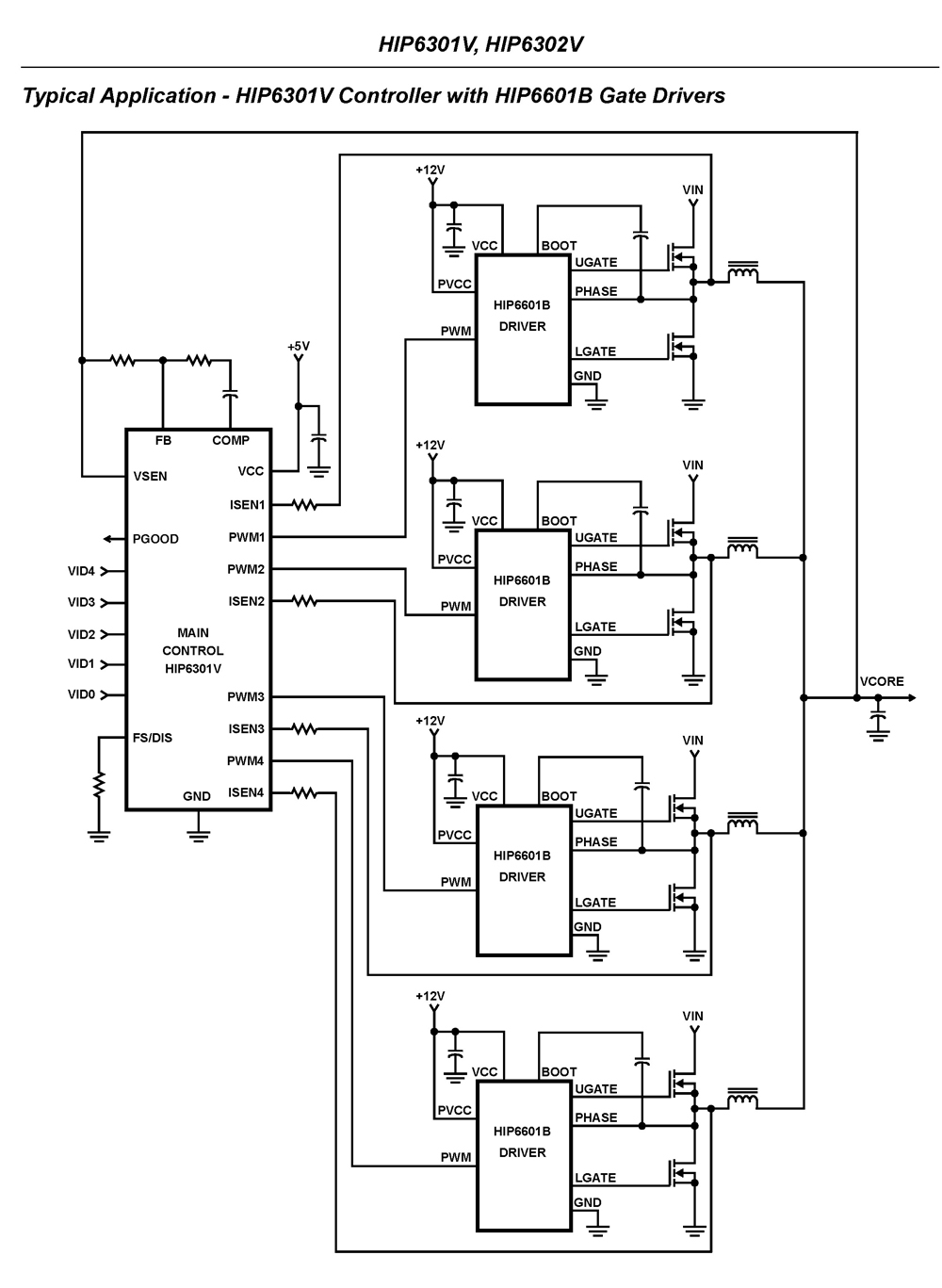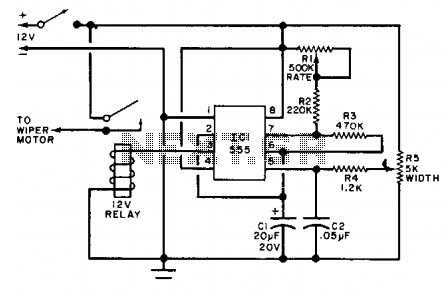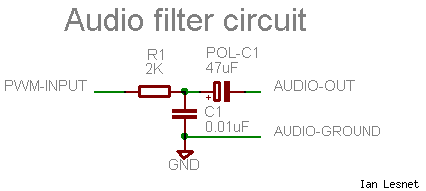
Compact DWDM laser Temperature Control with the MAX8521
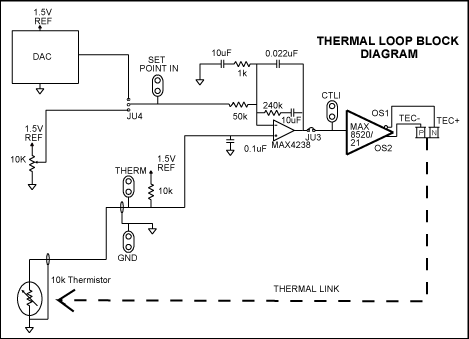
A compact thermal control solution for Dense Wavelength Division Multiplexing (DWDM) laser modules can be implemented using a MAX8520/21 and a single operational amplifier.
The proposed thermal control solution utilizes the MAX8520 or MAX8521, which are highly efficient, low-dropout linear regulators designed to provide precise voltage regulation. These components are particularly suitable for applications requiring stable power supplies, such as DWDM laser modules, where temperature stability is critical for performance.
In this circuit, the MAX8520/21 regulates the supply voltage to the laser module, ensuring consistent operation despite fluctuations in input voltage or load conditions. The inclusion of a single operational amplifier allows for temperature feedback control, which can be used to monitor the temperature of the laser module and adjust the output of the MAX8520/21 accordingly. This feedback mechanism is essential for maintaining optimal operating conditions and preventing thermal runaway, which could lead to performance degradation or failure of the laser module.
The operational amplifier can be configured in a negative feedback loop, where its output is connected to the control pin of the MAX8520/21. A thermistor or temperature sensor can be placed in close proximity to the laser module to provide real-time temperature readings to the op-amp. By comparing the actual temperature to a predetermined set point, the op-amp can adjust the control signal to the regulator, modulating the output voltage to maintain the desired temperature range.
Overall, this compact thermal control solution is efficient and effective, ensuring that DWDM laser modules operate within their specified thermal limits, thereby enhancing their performance and reliability in high-density optical communication systems.Compact thermal control solution for DWDM (Dense Wavelength Division Multiplexing) laser modules can be made using a MAX8520/21 and a single op amp.. 🔗 External reference
The proposed thermal control solution utilizes the MAX8520 or MAX8521, which are highly efficient, low-dropout linear regulators designed to provide precise voltage regulation. These components are particularly suitable for applications requiring stable power supplies, such as DWDM laser modules, where temperature stability is critical for performance.
In this circuit, the MAX8520/21 regulates the supply voltage to the laser module, ensuring consistent operation despite fluctuations in input voltage or load conditions. The inclusion of a single operational amplifier allows for temperature feedback control, which can be used to monitor the temperature of the laser module and adjust the output of the MAX8520/21 accordingly. This feedback mechanism is essential for maintaining optimal operating conditions and preventing thermal runaway, which could lead to performance degradation or failure of the laser module.
The operational amplifier can be configured in a negative feedback loop, where its output is connected to the control pin of the MAX8520/21. A thermistor or temperature sensor can be placed in close proximity to the laser module to provide real-time temperature readings to the op-amp. By comparing the actual temperature to a predetermined set point, the op-amp can adjust the control signal to the regulator, modulating the output voltage to maintain the desired temperature range.
Overall, this compact thermal control solution is efficient and effective, ensuring that DWDM laser modules operate within their specified thermal limits, thereby enhancing their performance and reliability in high-density optical communication systems.Compact thermal control solution for DWDM (Dense Wavelength Division Multiplexing) laser modules can be made using a MAX8520/21 and a single op amp.. 🔗 External reference
